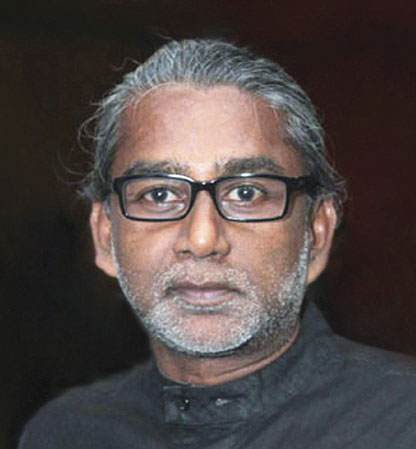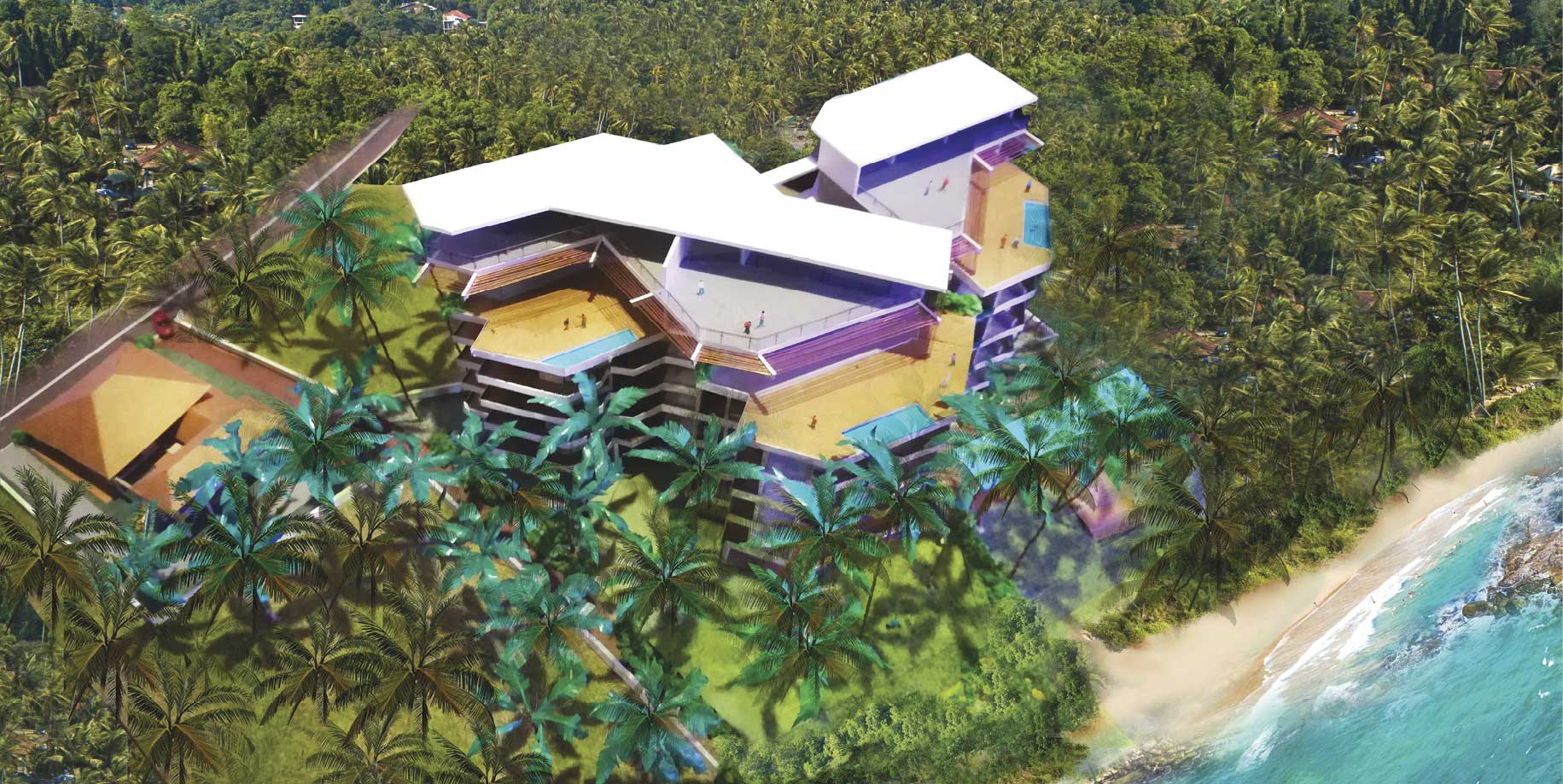LESS IS MORE

The need for responsible and energy efficient development
Architect Bernard Gomez
in conversation with
Nicola Jayasundera
Q: Could you tell us who or what inspired you to embark on your architectural journey?
A: My entry and initial exposure to architecture was accidental. Back in the early 1980s, there was no internet and an A-Level student’s exposure to architecture was quite limited.
When I sat for the aptitude test conducted by the Department of Architecture – University of Moratuwa, I had no serious intentions or expectations. However, I was one of 40 selected from among about a thousand hopefuls.
At the time, professors were passionate about their fields of speciality. After a casual glance at my badly drawn submission, the late Prof. Rupert Peiris – then Dean of the Faculty of Architecture – enquired if I would accept if I was selected.
It took one and half years through my bachelor’s degree to kindle an interest in architecture. Eventually, the interest developed into a passion while I was reading for my master’s degree, largely thanks to passionate architect-teachers such as Chris De Saram, Vidura Sri Nammuni, Prof. Lal Balasuriya and Ranjith Alahakoon.
Later, iconic architects such as Valentine Gunasekara and Minnette De Silva whom I apprenticed with inspired my creativity.
Q: What’s the most memorable accomplishment in your career?
A: In terms of authored projects, they are all important as part of a search for artistic truth.
An architect is always learning from authored projects, both built and unbuilt, by honing his or her craft through keen observation and curiosity. Every project is memorable, and a lasting legacy of one’s personal experiences and intellectual development at the time.
Q: As an artist, what do you hope to evoke in others through your work?
A: My architectural bias has always been about three-dimensional spaces and their positive or negative influences on people’s behaviour. The manner in which spaces are perceived fascinates me.
Architecture is all about the experiential spatial sequence and its seamless overlay of exterior on interior. Exterior here is synonymous with the natural and urban environments.
Q: Do you have a message you’d like to pass on to policy makers?
A: Many Asian countries and cities with traditionally strong cultural identities have succumbed to the trap of conforming to the globally influenced model of a developed city. Massive high-rise skylines are strongly influenced by global interests through foreign architects and developers, who have little understanding of a region’s culture and identity.
China is a good example. Some of its major cities over the past decade and a half have been cash cows for global developer brands. Developers and cities had been vying with each other to display these dubious construction projects that are a biased form of architectural iconography.
Eventually, China imposed a ban on buildings of exorbitant height and scale this year. To quote China Today: “Architectural designs must conform to urban design requirements in terms of shape, colour, volume, height and space requirements.”
I hope our policy makers follow suit!
While I favour development and believe in the freedom of artistic expression, I pull toward more responsible, responsive and energy efficient development projects. They need to combine well designed prime commercial space containing a limited number of residential units with green energy efficient footprints, each with their own public space and character.
Keeping to the lower end of the high-rise scale of 20-30 floors is the way to go for a developing city like Colombo. We are currently working on building projects along these lines, which I envision will add more identity and character to specific nodes in the city.
One such development is the Ceylex Enclave, which promises to redefine the notion of corporate headquarters. Rated LEED platinum on leadership in energy efficient design, this multistorey mixed development located at a prestigious address combines rentable office space with some high end high-rise living accommodation.
A similar trend of high density development currently prevails in the leisure sector. The trend of building high density multistorey hotels and serviced apartments on our limited coastal beach front is unnerving, to say the least.
Sri Lanka needs to carve out its own tourism niche that’s in line with cultural sensibilities. Culture is the expression of a traditional form of building and lifestyle, which is time-tested in its compatibility with the environment – both natural and climatic. And the architecture is people centric in its relationship to the place of origin.
Our tourism initiative should emphasise the ‘less is more’ concept and encourage smaller parcels of about an acre with fewer well designed units on a plot coverage of less than 50 percent.
Buildings should be located on coastal reservations that are not development prohibitive and their heights must conform to ground plus four floors, which is in sympathy with the height of Sri Lanka’s once ubiquitous coastal coconut palm belt.
I strongly believe that coastal reservations should include a ban on destroying this palm belt.
Individual properties and tourism chains should take responsibility for the overall ambience of our coastal stretch, with resorts preserving and enhancing their palm belts. Leisure infrastructure should combine quality accommodation with excellent service, emphasising culture and a bias toward indigenous cuisine – and retain a strong local flavour.
Sad to say, most of the coastal stretch has lost its charm due to ad-hoc development guidelines. There should be more emphasis on responsible design in the statutory approvals process so we can preserve the identity of the relatively unspoilt southern coast yet prevalent beyond Galle.
Post-COVID, I am optimistic that coastal tourism development promises to be vigorous – all the more reason for the scenic coastal beauty of this island nation to be carefully preserved. It is far too fragile to be treated with disrespect. We are currently exploring these concepts on several coastal developments – in Kottegoda, on the world-class Dickwella coastal stretch, and also in Weligama.
In our own small way, I hope these projects would set the trend for a future of sustainable development of our beautiful coastline
Architect Bernard Gomez FIA (SL) is the Principal Architect and Director of BGJF Consultancy Services


